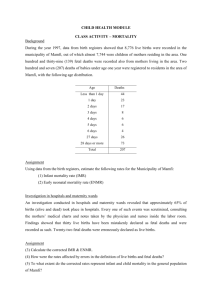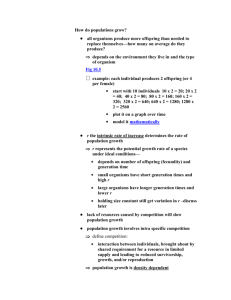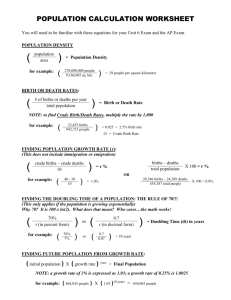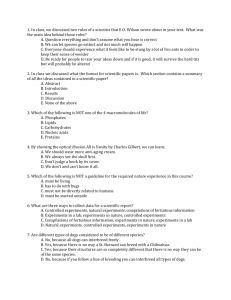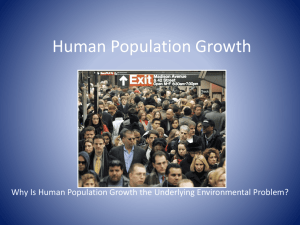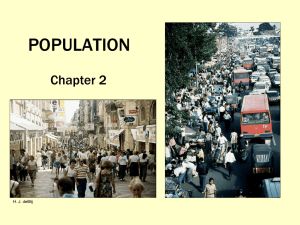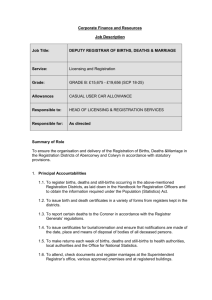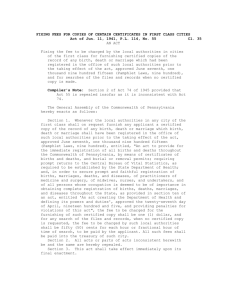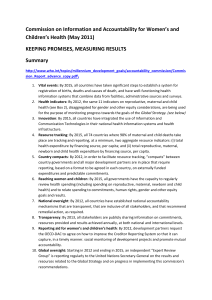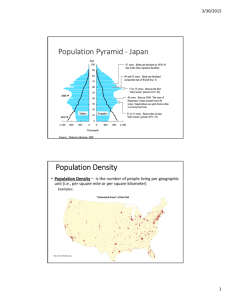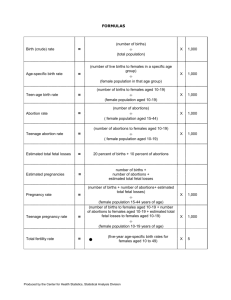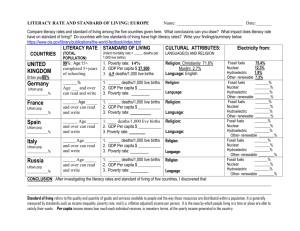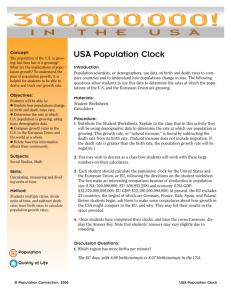1) A population of 200 organisms experiences 25 births and 30
advertisement
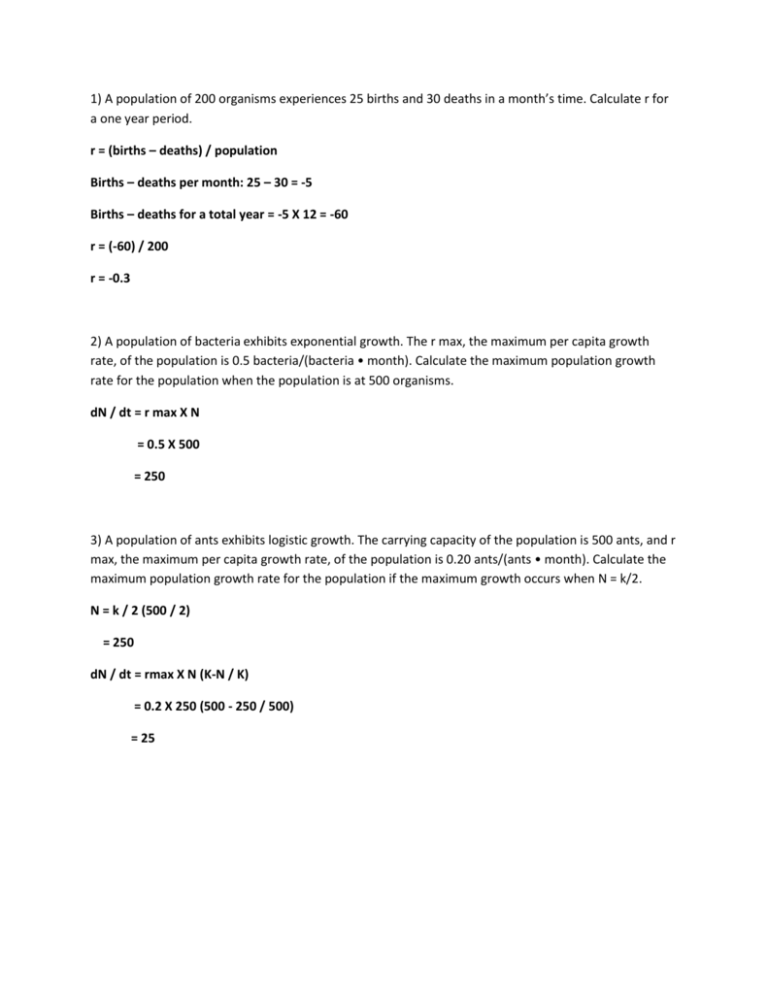
1) A population of 200 organisms experiences 25 births and 30 deaths in a month’s time. Calculate r for a one year period. r = (births – deaths) / population Births – deaths per month: 25 – 30 = -5 Births – deaths for a total year = -5 X 12 = -60 r = (-60) / 200 r = -0.3 2) A population of bacteria exhibits exponential growth. The r max, the maximum per capita growth rate, of the population is 0.5 bacteria/(bacteria • month). Calculate the maximum population growth rate for the population when the population is at 500 organisms. dN / dt = r max X N = 0.5 X 500 = 250 3) A population of ants exhibits logistic growth. The carrying capacity of the population is 500 ants, and r max, the maximum per capita growth rate, of the population is 0.20 ants/(ants • month). Calculate the maximum population growth rate for the population if the maximum growth occurs when N = k/2. N = k / 2 (500 / 2) = 250 dN / dt = rmax X N (K-N / K) = 0.2 X 250 (500 - 250 / 500) = 25 4) Population size is being estimated using the mark and recapture method. Twenty individuals are captured at random and marked with a dye or tag and then are released back into the environment. At a later time a second group of animals is captured at random from the population. 10 individuals were marked out of 35 that were captured the second time. Calculate the estimated population size. 𝒔 𝒙 = 𝑵 𝒏 rearranged to 𝑵 = N = 20 (35) / 10 = 70 𝒔𝒏 𝒙 5) Calculate the mean rate of change in the population from August 2001 to April 2006. dN / dt dN = 60,000 (Apr. 2006) – 35,000 (Aug. 2001) = 25,000 dt = This would depend on the unit of time you’re looking at. I should have specified more here. I will go by months. Including Aug. 2001 and Apr. 2006, this would 57 months. dN / dt = 25,000 / 57 = 438.6 6) A community has a total of 594,000 producers. How many organisms would be expected to be found at the secondary consumer level? You would expect to have 10% of the number of organisms as the previous trophic level. That would mean that there would be 59,400 primary consumers then 5,940 secondary consumers.







